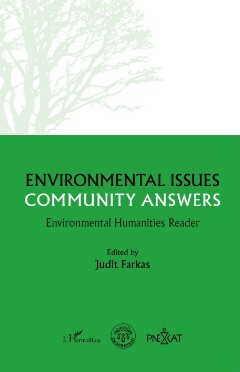
Page 100 [100]

OCR
98 VIKTOR GLIED 1. This is mainly effective in non-democratic countries: the population is not informed of the development until they no longer have a chance to change it. Those concerned may feel they are victims of injustice, with decisions being taken over their heads. Conflicts might start which drag on for many years, but neither party will obtain any benefits, so eventually there are no “winners”. 2. Another method is compensation: the developer compensates the settlement, region or country while loudly voicing the economic usefulness of the development (higher tax revenues, creation of jobs, innovations, subcontracting possibilities, etc.). The expected profit overrides the obviously negative impacts. 3. Under the third scenario, the developer and decision-makers collaborate with the local population and local and national NGOs to create alternative plans, optional sites, alternative methods of production or operation and clean — or at least cleaner — technology. In such cases, partnership, publicity and constant communication are effective and, as a result of the collective work, trust can be generated among all affected parties and solutions can be born which reassure everyone (Szanté 2008). Recommended readings Homer-Dixon, Thomas 1991. On the Threshold: Environmental Changes and Acute Conflict, International Security, 16/2: 76-116. The population of the Earth reached 8 billion in 2022. In the coming decades, the use and depletion of renewable natural resources (arable land, fresh water reserves, forests, etc.) are going to increase. We have to expect growing gaps between social groups as well as several social conflicts right down to the level of armed clashes caused by the scarcity of resources in certain countries. In this book, the author examines the social conflicts caused by environmental problems in the developing world. Bibliography Bela, Györgyi — Pataki, György — Valené Kelemen, Ágnes 2003. Társadalmi részvétel a környezetpolitikai döntéshozatalban (döntéstámogató eszközök és értékelési eljárások alkalmazdsa) [Social participation in environmental policy decisions (application of decision-making tools and evaluation procedures)]. Budapest, BKAE Kôrnyezettudomänyi Intézet. http:/korny.uni-corvinus.hu/kti/20_szam.pdf Csete, László — Láng, István 2009. A vidék fenntarthaté fejlédése [Sustainable development in the countryside]. MTA Történettudományi Intézet — MTA Társadalomkutató Központ, Budapest. Farkas, Judit 2018. Leválni a köldökzsinórról. Ökofalvak Magyarországon ISeparating from the umbilical cord. Ecovillages in Hungary]. Budapest, LHarmattan. Fekete, Jenő György 2006. Környezetstratégia IEnvironmental strategy]. 2nd revised ed. Pécs, Pécsi Tudományegyetem Pollack Mihály Műszaki Kar. Fülöp, Sándor 2018. Környezetjog — Környezeti konfliktusok. [Environmental law — Environmental conflicts] Budapest, NKE. Gleick, Peter H. 1990. Environment, Resources, and International Security and Politics. In Arnett, Erich H. (ed.): Science and International Security: Responding to a Changing World. Washington D.C., American Association for the Advancement of Science, 501-523.
structurelles
Custom
Image Metadata
- Largeur de l'image
- 1830 px
- Hauteur de l'image
- 2834 px
- Résolution de l'image
- 300 px/inch
- Taille du fichier d'origine
- 1.18 MB
- Lien permanent vers jpg
- 022_000083/0099.jpg
- Lien permanent vers OCR
- 022_000083/0099.ocr
